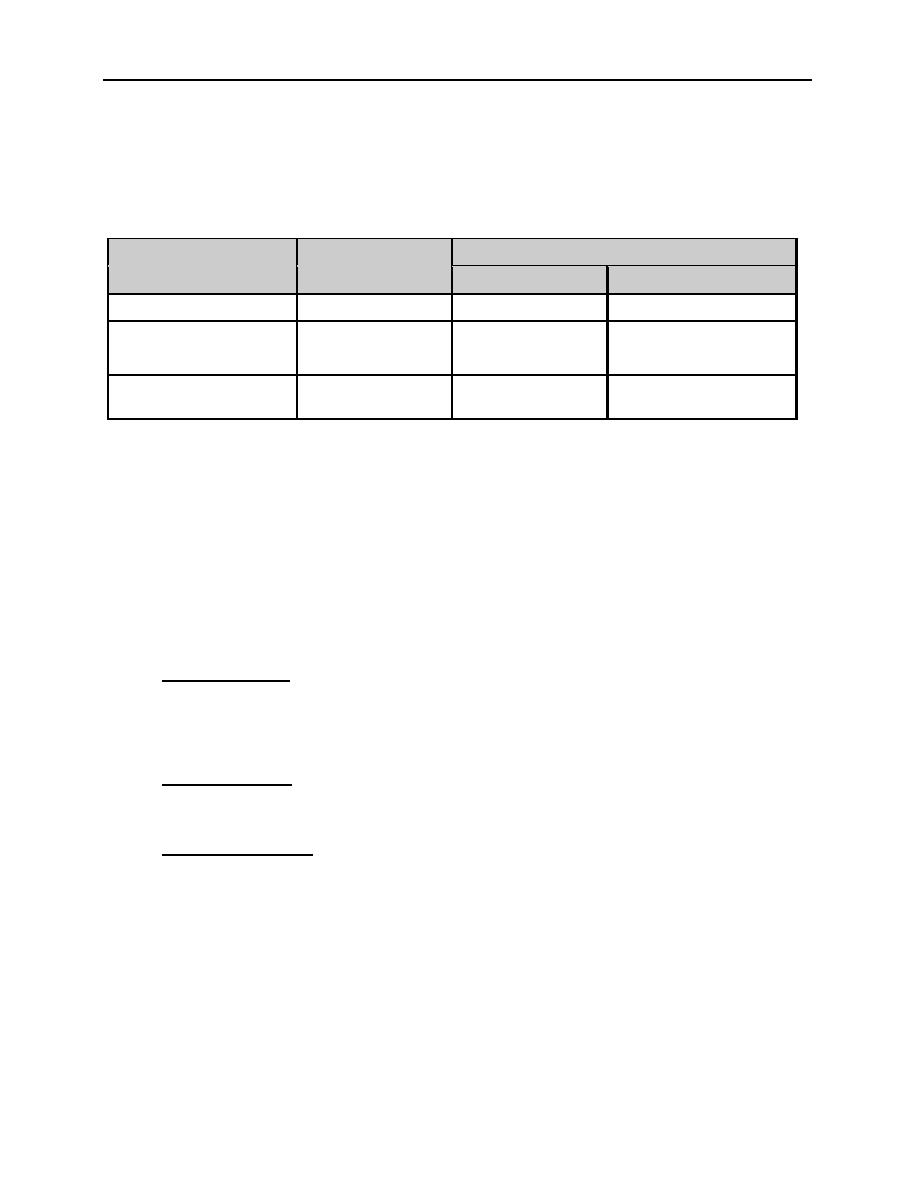 |
|||
|
|
|||
|
|
|||
| ||||||||||
|
|  JOINT ADVANCED MULTI-ENGINE T-44A
NOTE: The PIC is responsible for ensuring the proposed flight can be conducted under visual flight requirements
contained in the FARs. If weather conditions are not VMC, operations must be conducted under IFR.
The choice of VFR/IFR is normally dictated by weather and mission considerations. Established weather
criteria are minimums; greater margins should be allowed when operational requirements permit.
IFR flight plans shall be filed and flown whenever practicable, as a means of reducing midair collision
potential.
Distance from Clouds
Altitude
Visibility
Horizontal
Vertical
At or above 10,000 MSL
5 SM
1 SM
1000' above/1000' below
Below 10,000 MSL
3 SM
2000' horizontal
1000' above/500' below
1 SM-uncontrolled
Uncontrolled airspace below
1 SM
clear of clouds
1200 AGL
Table 1. VFR Weather Minimums
Controlled airspace in the U.S. is designated as a Class A, B, C, D, and E. Weather minimums and special
operating procedures apply. Most controlled airspace can be visualized on the sectional chart:
Class D. Heavy blue ---- or TTTT lines. Normally surface up to 2500' above the airport elevation.
Class C. Heavy hashed magenta lines. Airport center to 5 nm; surface to 4000' AGL.
5 nm to 10 nm:
1200 to 4000 feet AGL. Transponder is required within all Class C.
Class B. Heavy blue solid line. Upside down wedding cake. Various shapes/altitudes. Thin blue solid
line indicates 30 nm "Mode C required" circle.
Class E. Generally, airways begin at 1200' AGL.
Class A. Airspace 18,000' and above. VFR normally not allowed.
Takeoff Minimums.
VFR takeoff minimums are dependent on the applicable airspace. In controlled airspace, weather must be
`better than 1000' ceiling and 3 miles visibility. Outside of controlled airspace, one mile/clear of clouds
(below 1200' AGL). Takeoff under visual flight rules (in a fixed wing aircraft) with conditions less than
1000 - 3, is not recommended.
Enroute Minimums.
Enroute minimums are determined by airspace in which the aircraft is operated; controlled or uncontrolled,
and operating altitude.
Destination Minimums.
Ensure weather minimums for destination is 1000 - 3 or better. Alternate minimums do not apply;
however, divert airfields should be considered, as weather or mechanical problems might dictate a change
of destination.
T-44 over land VNAV minimums for filing are 1500 - 3 for takeoff, enroute, and destination. Be prepared
to navigate around isolated rain showers if conditions are less than VMC.
6-2
VISUAL NAVIGATION STAGE
|
|
Privacy Statement - Press Release - Copyright Information. - Contact Us |